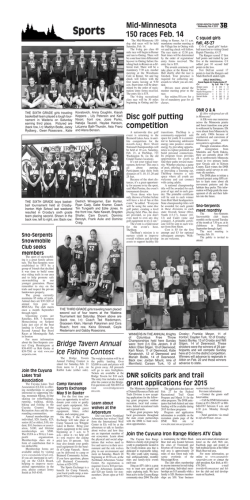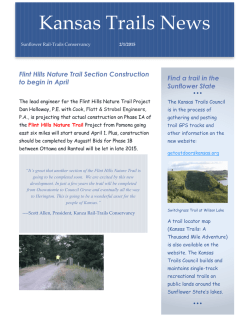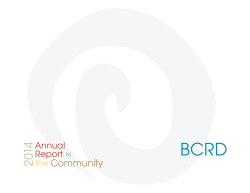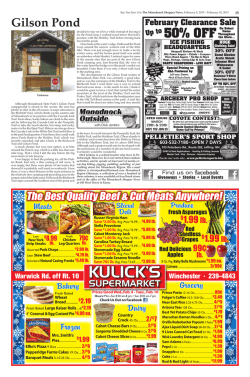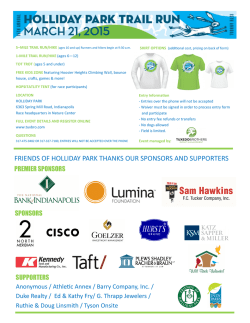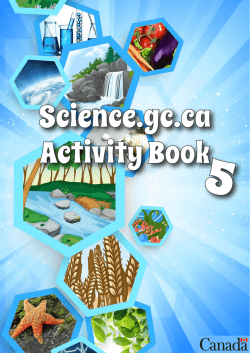
Salmon Valley Trails Action Plan
Salmon Valley Trails Action Plan Updated Spring 2015 ACKNOWLEDGMENTS The following people contributed to the development of this plan: • • • • • • • • • • • • • • • • • • Michelle Tucker, Salmon Valley Stewardship (Project Coordinator) Gina Knudson, Salmon Valley Stewardship Jo Meyers, Salmon Valley Stewardship JoAnn Wolters, Lemhi Mobility Team Dave Lingle, Salmon Idaho Mountain Biking Association Max Lohmeyer, Salmon Idaho Mountain Biking Association Tammy Stringham, Lemhi County Economic Development Association Judy Barkley, City of Salmon Skeet Townley, U.S. Bureau of Land Management Liz Townley, U.S. Forest Service Linda Price, U.S. Bureau of Land Management Terry Heslin, U.S. Bureau of Land Management (State Office) Trish Callaghan, U.S. Forest Service Jeff Osgood, Community Transportation Association of Idaho Carole Richardson, David Evans and Associates, Inc. Bill Shaw, Idaho Department of Transportation Mary Cerise, City of Salmon Steve Frazee, Engineer Technical Assistance provided by David Evans and Associates, Inc. was made possible through a grant from the Paul S. Sarbanes Transit in Parks Technical Assistance Center (TRIPTAC). TABLE OF CONTENTS Introduction .................................................................................................................................... 4 Values and Visioning ....................................................................................................................... 6 Goals and Objectives....................................................................................................................... 8 Funding Opportunities for Trail System Development ................................................................. 11 Stakeholder Assessment ............................................................................................................... 17 Action Plan .................................................................................................................................... 18 INTRODUCTION Trails advocates, federal land management agency staff and non-profit groups in Lemhi County, Idaho are working to preserve and improve multi-modal access to public lands and the Salmon and Lemhi Rivers, as well as multi-modal travel within and between communities. In 2012, this group worked collaboratively to establish a vision, goals and objectives for a regional trail system; explore funding opportunities; discuss potential stakeholder resources, issues and concerns; and outline an action plan. It is recommended that this plan be updated annually. The region’s existing trail system includes facilities with both transportation and recreational functions. The system is comprised of highway corridors, which currently provide the primary means of connecting communities with public land and river access points, as well as a robust network of trails and roadways on lands managed by the U.S. Forest Service (USFS) and Bureau of Land Management (BLM). This report summarizes the group’s recommendations for future development of the regional trail system. Page | 4 Salmon Valley Trails Action Plan 2015 Update $ Morgan Bar Recreation Site 0 4,800 Trailhead/Rec 9,600 Feet Site $2,400 Existing Existing Trails Proposed Hwy 93 Trail USF Carmen S-0 23 $ $ USFS Roads Carmen Campground/ Boat Ramp BLM STATE Lemhi County Fairgrounds USFS ¹ Discovery Hill Recreation Site $ Lemhi Hole Island Park $ City of Salmon Sacajawea Center $ Le m hi Ri ve r US93 Salmon River City Park $ $ CityPark Barracks Lane Trailhead Shoup Bridge Recreation Site USFS-021 0 $ 0.5 1 $ 2 Miles Sources: Esri, DeLorme, NAVTEQ, TomTom, Intermap, increment P Corp., GEBCO, USGS, FAO, NPS, NRCAN, GeoBase, IGN, Kadaster NL, Ordnance Survey, Esri Japan, METI, Esri China (Hong Kong), swisstopo, and the GIS User Community Salmon Valley Trails and Recreation Sites Overview Lemhi County, Idaho Areas identified as proposed trails are not formally designated as trail corridors. Public surveys and comments have identified these as potential opportunties only. ^ Date: 1/30/2015 VALUES AND VISIONING Planning work began with a look at the reasons why a regional trail system is important to the Salmon Valley. At an initial workshop, the group discussed aspects of life that they especially value and would like to see preserved and supported by the trail system. Many people choose to live and work in the Salmon Valley because of a deep appreciation and enjoyment of the outdoors, wildlife and scenic resources. Vast areas of public land contribute to a strong sense of freedom and openness in the area. The ability to move freely across large expanses of land is highly valued, especially since these opportunities are diminishing in other parts of the country with surrender of open space to urban and suburban development. Trails advocates also understand and appreciate that ranching and mining are important contributors to the area’s economy. They respect that public lands provide both recreational and economic opportunities, and understand that consideration of different perspectives will be important as the trail system is developed. Salmon Valley Trails System Core Values Healthy Families Economic Stability Local History and Culture Access to Public Land and our Rivers Ability to move freely across the land Wildlife and Riparian Areas Scenic Areas Rural Character and Quality of Life Safe, Affordable Communities Ability to get around without a Vehicle Page | 6 Salmon Valley Trails Action Plan 2015 Update Efforts to promote and support a healthy local economy have been balanced by strong desires to safeguard the area’s existing rural character and quality of life. There is a special sense of place in the Salmon Valley. Participants expressed a desire for trail development strategies that preserve the individuality of the area. Significant value is placed on healthy families in the Salmon Valley, not only from the standpoint of physical health and safety, but also economic health. The ability to travel safely without a car is important, especially for our children. Trail system development could support more affordable travel options as fuel prices continue to fluctuate. After considering these values, the group adopted this overarching vision statement for the regional trail system: “A safe system of trails that connects Lemhi County communities and assures access to public lands and rivers for everyone”. Salmon Valley Trails System Vision Statement A safe system of trails that connects Lemhi County communities and assures access to public lands and rivers for everyone. Page | 7 Salmon Valley Trails Action Plan 2015 Update GOALS AND OBJECTIVES Goals and objectives for a regional trail system are built on the core values and vision statement. To the extent possible, goals and objectives were designed to be specific, measurable, achievable, realistic and timely, or “SMART”. GOAL 1: PROVIDE SAFE ACCESS TO PUBLIC LANDS Objective 1A: Accomplish Salmon to City Park trail connection along SH28 by 2013. Objective 1B: Accomplish improvements at public recreational facilities such as Morgan Bar. Island Park and Shoup Bridge that support the Salmon Valley Trail System. Objective 1C: Focus on developing trail connections to communities, public lands access points and river access points within 10 miles of Salmon over the next 20 years. Objective 1D: Provide multi-modal connections to other communities, public lands access points, river access points, scenic and backcountry byway destinations as resources allow. Objective 1E: Advocate for ongoing maintenance, retention and improvement of recreational trails on public lands. GOAL 2: PRESERVE AND ENHANCE RECREATIONAL OPPORTUNITIES FOR MOTORIZED AND NON-MOTORIZED TRAIL USERS Objective 2A: Create a county-wide public lands recreational trails atlas by 2012. Objective 2B: Provide an on-going forum for improved coordination and public education regarding the Salmon Valley Trail System. Objective 2C: Preserve access to public lands as private property ownership is transferred and property is developed. Objective 2D: Encourage connectivity between City and County trails that provides for safe access and supports multiple use for trails users and vehicles to and through the City of Salmon. Page | 8 Salmon Valley Trails Action Plan 2015 Update GOAL 3: PRESERVE WILDLIFE AND RIPARIAN HABITAT ALONG RIVER CORRIDORS Objective 3A: Accomplish improvements at public recreation sites along the river to establish trail heads and provide for trail infrastructure. Objective 3B: Identify, improve and encourage use of designated locations for Salmon and Lemhi river access. Object 3C: Explore river corridor trail easements that establish setbacks from the river and riparian habitat. GOAL 4: PROMOTE HEALTHY LIFESTYLES AND INCREASE ENJOYMENT OF LIFE IN THE SALMON VALLEY Objective 4A: Leverage high school and community service programs. Objective 4B: Create alliances with hospitals and their ongoing community efforts. Objective 4C: Design community events to celebrate and encourage alternate modes of travel. GOAL 5: TAKE AN “INSIDE-OUT” APPROACH, PUTTING LOCAL NEEDS FIRST. Objective 5A: Involve the public in trail planning and construction decisions. Objective 5B: Build public ownership, support for, and pride in, the trail system. Objective 5C: Emphasize using local workforce in the development of the trail system. Page | 9 Salmon Valley Trails Action Plan 2015 Update GOAL 6: PRESERVE RURAL CHARACTER WHILE ENHANCING ECONOMIC VITALITY Objective 6A: Leverage outdoor tourism strategies to increase visitor spending in the Salmon Valley. Objective 6B: Explore tribal partnerships for economic development (Fort Hall / Shoshone Bannock, Lemhi Shoshone, Possibly Nez Perce). GOAL 7: HIGHLIGHT LOCAL CULTURE, CUSTOMS, AND HISTORY Objective 7A: Make trails compatible with livestock and agricultural uses. Objective 7B: Recognize local legacies, including mining, ranching and tribal histories. Coordinate with tribes on appropriate access to tribal sites. Objective 7C: Incorporate interpretive information in trail system development. Page | 10 Salmon Valley Trails Action Plan 2015 Update FUNDING OPPORTUNITIES FOR TRAIL SYSTEM DEVELOPMENT FEDERAL FUNDING CHANGES It is important to note that most of the federal funding programs available for trail development fall under current federal highway and transit programs legislation. Congress enacted a bill entitled “Moving Ahead for Progress in the 21st Century”, or MAP-21, in July, 2012. This act authorizes all federal transportation funding programs until September 30, 2014. MAP-21 changed the way federal funding was historically structured, by consolidating multiple programs into fewer, larger programs. While most of the trail projects and activities that were eligible for funding under the prior federal authorization are still eligible under MAP-21, project proposals may have to compete in a larger arena. When MAP-21 expires additional changes to federal funding are on the horizon. However, regardless of the outcome of the next reauthorization bill, it is likely that trail funding opportunities will still exist in the future in some fashion. In debating the future of transportation funding, Congress appears to be placing considerable emphasis on good planning and performance measures. Having an adopted plan and staying focused on the goals and objectives of that plan will be a key to securing federal funds. FEDERAL FUNDING OPPORTUNITIES Because Salmon Valley communities are surrounded by federal lands, the region is in an excellent position to take advantage of federal funding programs that are not universally available to other areas. Considering Objective 1C, which is to focus first on developing trails from Salmon to public lands access points within a 10-mile radius of Salmon, three funding programs administered by the Federal Highway Administration deserve consideration: Federal Lands Transportation Program (FLTP). This program which is administered by the Federal Highway Administration (FHWA) allows funding for trails located on or adjacent to, or providing access to federal lands where the Federal Government has title and maintenance responsibilities for the facility. A key note is that funds from this program may be used as matching funds for other federal transportation programs. Federal Lands Access Program (FLAP). This program, also administered by FHWA, has funding provisions for pedestrian and bicycle facilities located on or adjacent to, or that provide access to federal lands, where state, tribal or local agencies have title and maintenance responsibilities. Transportation Alternatives Program (TA). The new TA program will be administered by the Idaho Transportation Department (ITD). It can be used to fund construction, planning and design of onroad and off-road trail facilities for pedestrians, bicyclists and other non-motorized forms of Page | 11 Salmon Valley Trails Action Plan 2015 Update transportation, including sidewalks, bicycle infrastructure, safety-related improvements, and projects that help agencies comply with the Americans with Disabilities Act. The TA program is best applied where trails are intended for transportation purposes, rather than recreational purposes. Trail facilities adjacent or parallel to highway corridors would be good candidates. While these three programs currently appear to best match goals and objectives for the regional trail system, other programs may provide additional funding opportunities. Examples include the Recreational Trails program, managed by the Idaho Department of Parks and Recreation, or the Federal Transit Administration’s Bicycle Facilities program, which can fund projects to improve bicycle access to transit. MATCHING STRATEGIES Some federal programs that specifically support public lands initiatives, such as the Public Lands Highways Program or the Forest Highway Program, do not require matching funds. However, most grant programs require that applicants match the grant with cash. In some cases “in-kind” match in the form of services, materials, equipment or property is allowed. State and private grants should be explored as sources of matching funds. Additionally, the City of Salmon’s Local Option Tax may be leveraged to bring trail project funding into the area. Donations from regional employers and corporate donations from companies such as recreational equipment or outdoor clothing companies could be investigated as sources of matching funds. The federal Scenic Byways program offers a unique opportunity for revenue generation that should be further explored. It is possible for Scenic Byways projects to generate “program income”, which includes revenue from grant-supported activities, such as fees for services performed, the use or rental of real or personal property acquired with Scenic Byways funds, or the sale of commodities or items produced during the grant period. If handled carefully, Scenic Byways program income can be used as match. (Advance approval from the Federal Highway Administration is required for this.) In addition, there are generally no restrictions on income Page | 12 Salmon Valley Trails Action Plan 2015 Update generated after a grant or project period has ended. In other words, the Scenic Byways program could be used creatively to establish a sustainable source of funds for trail improvement and maintenance, or for matching future grant applications. Technical assistance opportunities are also inventoried. DATA, STUDIES AND PLANS NEEDED TO SUPPORT FUNDING REQUESTS Funding agencies often require assurance that their moneys will be used to address an identified and documented need. Most trail system funding requests will need to be accompanied by a clear explanation of the reason why the project is justified, and may need to be supported by hard data or valid studies. To help make the case for trail system projects in the Salmon Valley, a regional survey of river and trail users would be helpful to: Quantify current users of public lands and river access areas, Confirm priorities and needs for access to specific river and public lands access locations, and other regional destinations, Gauge attitudes and support for trail system development. A regional market analysis is also recommended to: Forecast the number of potential local and visitor users of a regional trail system, and Estimate the potential for increased economic activity that could result from trail system development, and Develop strategies for trail system marketing and promotion, including a regional branding effort. Additionally, before requesting funds for construction of new trails, an initial feasibility study for each potential trail project is recommended. Feasibility studies should include an assessment of alternative alignments, environmental impacts, costs and benefits, including long-term maintenance responsibilities and strategies. Page | 13 Salmon Valley Trails Action Plan 2015 Update FEDERAL TRANSPORTATION PROJECT DEVELOPMENT PROCESS A primary objective of this plan is to develop trail connections to communities, public lands access points and river access points within 10 miles of Salmon over the next 20 years. This will involve establishing trails adjacent or parallel to US Highway 93 and State Highway 28 Since federal transportation funding programs provide some of the most promising funding opportunities for trails in the Salmon area, it is important to understand and follow the process for federal-aid transportation projects in Idaho. This will be especially critical for implementation of any trails facilities adjacent or parallel to US93 and SH28. Rather than requesting funding for all phases of a project at once, a phased approach is recommended. Projects typically begin with a funding request for planning, environmental and design work. This allows evaluation of alternative alignments and resulting advantages, impacts and costs. After a preferred alternative is selected and the feasibility of the project is confirmed, a larger funding request can be made for right of way acquisition (if needed) and construction. In general, federally-funded transportation projects have these major stages: Planning/Environmental Design Right of Way Acquisition Construction Page | 14 Salmon Valley Trails Action Plan 2015 Update PARTNERSHIPS ARE KEY The Idaho Transportation Department (ITD) has staff with significant expertise in federal aid project development. ITD should be engaged early, when funding applications are prepared for any trail improvements adjacent or parallel to US93 or SH28. Similarly, funding requests for projects on or adjacent to federal lands will require close coordination with, and support of, USFS and BLM. A regular forum for inter-agency coordination of trails system development and funding requests is therefore recommended. The Community Association of Idaho’s local mobility management network may provide a forum for this purpose. Page | 15 Salmon Valley Trails Action Plan 2015 Update LOCAL CAPACITY There are a number of good funding opportunities available for trail system development. A limiting factor for the Salmon Valley at the present time is the lack of a dedicated grant coordinator. Successful progress toward trail system goals will depend on the region’s ability to stay on top of funding opportunities, anticipate application deadlines, respond to federal funding solicitations, coordinate matching funds and prepare applications. Grant management could be accomplished by the funding of a part-time grant coordinator position at an existing agency, or by establishing a small account for contracted grant coordination assistance. A shared grant-writer for City, County, Federal Land Management Agencies and non-profit groups in the area could be a cost-effective approach. PATIENCE IS PRESCRIBED Funding trail system improvements will require patience and diligence over many years. Some projects will require a phased approach with multiple, sequential grant applications. Grant programs are competitive and applications are not always awarded after the first request. It is important not to give up after the first try. Page | 16 Salmon Valley Trails Action Plan 2015 Update STAKEHOLDER ASSESSMENT Following a review of potential funding sources, planning participants performed a stakeholder analysis to: Discuss possible impacts of trail system development on local community groups, businesses and organizations. Identify potential community partners and resources for trail system development. Discuss potential opponents to trail system development and the possible reasons. Discuss communication strategies for both champions and opponents. A stakeholder matrix was prepared to set the stage for future outreach efforts. The trails group also identified a member of their ranks who would be willing to serve as the key point of contact for each stakeholder group. The matrix and other materials developed during the stakeholder analysis process are provided in Appendix A. Page | 17 Salmon Valley Trails Action Plan 2015 Update ACTION PLAN The regional trail system can only be developed as resources allow, and maintaining focus is paramount. For this reason, this action plan considers phasing as well as short and long term actions: IMMEDIATE ACTIONS (1 TO 2 YEARS) Immediate actions include completion of trails-related projects that are currently underway, along with other low-cost activities. • The 2L Trails Feasibility study, funded by FLAP and initiated in 2014, is slated to be complete in spring 2015, to coincide with the release of the FLAP request for proposal for 2015. Efforts to obtain construction funding from this resource should be considered a priority. • Emphasize to ITD the importance the community’s desire to include pedestrian and recreational trails in the management of US93 and SH28: ◦ The pending re-construction of Shoup Bridge provides an opportunity to work with ITD, the BLM and Lemhi County to address the US93/Shoup Bridge intersection. In its current configuration, it does not adequately accommodate a trail in the highway right of way, or the entrance to the Shoup Recreation Site. The BLM has indicated they are in full agreement to resolve the current situation to better accommodate the Shoup Recreation site as well as the proposed trail system. They are also open to considering ways to provide additional parking for increased use at this site to accommodate trail users. The construction of the bridge is slated for 2015 and as such this coordination should be a priority action item for the potential development of the US93 South trail corridor. ◦ Work with ITD on the Airport Way turning lane to coordinate proposed trail alignment and culvert extension on the west side of the highway. • Ongoing coordination and data collection activities are recommended to maintain critical partnerships and position the region for future grant requests and project implementation. • Create public and private partnerships to maintain and advocate for ongoing maintenance, retention and improvement of trails on public lands. NEAR TERM ACTIONS (1 TO 10 YEARS) • Within the next 10 years, a trail extension from BLM land to connect Discovery Hill and the Carmen Valley, and Morgan Bar to the Fairgrounds should be pursued. This includes the procurement of easements through private property to retain access to the Salmon River and public lands. Page | 18 Salmon Valley Trails Action Plan 2015 Update • Securing funding for feasibility analysis of a trail parallel to the SH28 corridor from Salmon to Baker is also recommended. For this segment, potential trail improvements for access to the Barracks Lane trailhead area should also be examined. Since federal transportation funding programs are the most promising sources of money for constructing trail connections adjacent to US93 and SH28, using ITD’s federally-approved “Concept Report” process for feasibility studies is a good idea. Concept Reports prepared for each corridor should: ◦ Examine trail alignment alternatives ◦ Provide an environmental scan ◦ Assess right of way needs ◦ Analyze benefits, costs and other impacts ◦ Select a locally preferred alternative, and ◦ Determine a phasing/funding plan. Accomplishing Concept Reports for trails parallel to the US93 and SH28 corridors would position the region for funding to complete design and construction. • The Salmon Valley Trails system should include safe connectivity to and through the City of Salmon. It is important to designate pedestrian and bicycle routes through the City that do not conflict with vehicle parking and traffic. These routes should consider City infrastructure such as schools and parks to provide increased safety for youth. • Update this Action Plan annually. Accomplishments and progress made should be acknowledged, and remaining projects and priorities reconfirmed or revised. Page | 19 Salmon Valley Trails Action Plan 2015 Update MID-TERM ACTIONS (10 TO 20 YEARS) • Within the next 10 to 20 years, fully implement key trail connections adjacent or parallel to SH28 between Salmon and Baker. • Continue to encourage participation in the Salmon Valley Trails group by multiple user groups such as backcountry horse men and motorized users. • Continue to gauge public opinion as trails are developed to adjust priorities and consider new alternatives. LONG-TERM ACTIONS (BEYOND 20 YEARS) Long-term actions are beyond the 20-year timeframe, but should be kept in mind as near and mid-term projects are implemented. • Public comment on potential trail corridors indicates that a trail along the Salmon River is desired, however, private land ownership issues require more planning and coordination, and make this a long term option. As opportunities arise, procuring sections of these trails through easements may provide for future connectivity of this route. • Access to the Continental Divide Trail is available from SH29 east of Leadore, and at Lost Trail Pass. Trail system extensions to Tendoy could improve multi-modal access to the Lewis and Clark Backcountry Byway. Trail extension to the north could provide multi-modal access to the Tower Creek area, and ultimately to Lost Trail Pass. • As the regional trail system is developed and gains in popularity, transit strategies could also be deployed to connect travelers with popular public lands areas, river access points, and neighboring communities. Page | 20 Salmon Valley Trails Action Plan 2015 Update ¹ $ Morgan Bar Extension Near Term (1-10 years) Mid Term (10-20 years) Carmen Long Term (20+ years) $ Lemhi County Fairgrounds Discovery Hill Extension $ $ Carmen Boat Ramp $ Trail Head Development $ Existing Trailhead/Rec Site Existing Trails BLM US93 STATE USFS Discovery Hill Trails $ $ Lemhi Hole Island Park$ City of Salmon Sacajawea Center $ City Park $ City Park Lem hi R iv e r y2 8 US93 Salmon River Hi gh wa Barracks Lane Trailhead $ Shoup Bridge 0 0.5 1 $ 2 Miles The USDA-FSA Aerial Photography Field office asks to be credited in derived products. Salmon Valley Trails Recommended Priorities Lemhi County, Idaho Areas identified as proposed trails are not formally designated as trail corridors. Public surveys and comments have identified these as potential opportunties only. ^ -113.885056 45.172940 Decimal Degrees Page | 21 Salmon Valley Trails Action Plan 2015 Update TABLE 1 – SALMON AREA TRAILS ACTION PLAN – UPDATED 1/15/15 – ONGOING/NEW ACTION ITEM SCHOOL PROXIMITY ECONOMIC GROWTH SAFETY COMMUNITY CONNECTIVITY PLAN OBJECTIVES SUPPORTED BY THIS ACTION PUBLIC LAND ACCESS DESCRIPTION PROJECT JUSTIFICATION RECREATION ITEM NO. ACTION ITEM (Include Date Action Item was incorporated in plan) TRANSPORTATION USE POTENTIAL FUNDING SOURCES 2B X X X X X X X N/A CTAI Trails Committee 5A, 5B X X X X X X X Local SVS 4C, 5B X X X X X Local/Private FLAP SIMBA SVS Agencies X X X X LOT, FLAP County, SVS X X X X Steel Reese, Private Donors Volunteers SVS, CTAI ACTION OWNERS ONGOING ACTION 1 Funding Opportunity Coordination, 2012 Coordinate funding opportunities and track progress with LMMN Plan. 2 Public Information, 2012 Maintain an on-line location where interested citizens can view the action plan and follow the trail group's activities. Assist and promote annual events that raise awareness and support for trails. 3 4 5 Community Events, 2012 This includes trail cleanup and maintenance campaigns, bike clinics, and organized rides such as Pathways Awareness, 12 Hours of Disco, and Lemhi Valley Century Ride. Landowner Communication Strategy, 2013 Maintain Action Plan, 2012 Encourage landowner engagement for property owners adjacent to trail systems. Involve landowners early in the discussion. 1C- D, 2C Develop a protocol for signage, design and use that protect private property rights. Update Action Plan Annually to coincide with LMMN plan update. Include new activities and public input regarding trails, address as appropriate. 5A, 5B X X Distribute updates to trails partners. 6 Page | 22 Public Trails Maintenance, 2013 Retain Forest Service and BLM trails work priority list. Advocate for ongoing maintenance, retention and improvement of recreational trail on public lands. Seek opportunities to work with partners and to use outside funding sources to do maintenance on priority trails. 1C, D, 2C Salmon Valley Trails Action Plan X X X X LOT, State RTP, Private Foundations, Federal YEP, S. Adams 2015 Update TABLE 1 – SALMON AREA TRAILS ACTION PLAN – UPDATED 1/15/15 – ONGOING/NEW ACTION ITEM 7 Trails Action Plan Adoption by City, 2015 Encourage City incorporate plan by reference into the City's Transportation Plan currently under review. Work with City to identify key connectivity opportunities and begin planning process. 5A, 5B X X X X X X COMMUNITY CONNECTIVITY SAFETY ECONOMIC GROWTH SCHOOL PROXIMITY PLAN OBJECTIVES SUPPORTED BY THIS ACTION PUBLIC LAND ACCESS DESCRIPTION PROJECT JUSTIFICATION RECREATION ITEM NO. ACTION ITEM (Include Date Action Item was incorporated in plan) TRANSPORTATION USE POTENTIAL FUNDING SOURCES X LOT X LOT Local ACTION OWNERS SVS Mary IMMEDIATE (WITHIN THE NEXT TWO YEARS) 8 9 10 Trail System Branding and Marketing Plan, 2012 Develop Trails Management/ Maintenance Team, 2013 Develop Trails Management Plan, 2015 Hire professional marketing firm to develop a unique name and brand for the trail system. Prepare a trails marketing plan to promote outdoor tourism. Use local artists in the development of logo and graphics to the extent possible. 6A X X X Develop a maintenance plan for 2L Trail System that includes organizational structure for maintenance of trails system. Work with Lemhi County Road and Bridge on trail design that will complement existing maintenance equipment and schedules. X X X X X X X X X X X X X X X X Develop a master plan for 2L Trail System that includes design criteria and phased development priorities. Work with the City to incorporate connectivity of trails through and within the City Limits. X LOT FLAP LOT FLAP SVS County City Agencies Trails Committee County, City, Trails Committee Work with ITD on identifying US93 as a multiple use corridor that supports recreational as well as commuter travel. 11 Page | 23 Shoup Bridge-Hwy 93 Intersection, 2015 Work with partners to address intersection at Shoup Bridge (turning lane, recreational site, bridge construction, trailhead access) and their impacts on a proposed Hwy 93S trail. 1C, D, 3A, B Encourage new bridge design to incorporate a designated pedestrian/bicycle lane. Salmon Valley Trails Action Plan FLAP SVS All 2015 Update TABLE 1 – SALMON AREA TRAILS ACTION PLAN – UPDATED 1/15/15 – ONGOING/NEW ACTION ITEM 13 14 Trail Infrastructure Development 2015 2L Trails Feasibility Study for connectivity to Morgan Bar and Shoup Bridge, 2015 Work with public agencies who manage recreation sites along proposed trail corridors to develop trail infrastructure such as restroom facilities and parking. Initiate discussions with Fairgrounds Board to consider trailhead construction on Fairgrounds property. Utilize findings from study to seek funding for construction of priority trail segment(s). X 1B-D, 3A & B, 7C 1, 2, 4 X X X X X X COMMUNITY CONNECTIVITY X ECONOMIC GROWTH X SCHOOL PROXIMITY 1C, D, 3A, B SAFETY Coordinate construction of turning land with ITD to ensure compatibility with proposed trail corridor PLAN OBJECTIVES SUPPORTED BY THIS ACTION PUBLIC LAND ACCESS 12 Airport Way Turning Lane, 2015 DESCRIPTION RECREATION ITEM NO. ACTION ITEM (Include Date Action Item was incorporated in plan) PROJECT JUSTIFICATION TRANSPORTATION USE POTENTIAL FUNDING SOURCES X X FLAP ACTION OWNERS Steve LOT FLAP Steel Reese CHC County City SVS X X X X X FLAP County X X X Local All RTCA NRT Local/Private BLM/SVS NEAR TERM ACTIONS (1 – 10 YEARS) 15 16 Page | 24 Regional Grant Coordinator, 2012 Coordinate with public and non-profit agencies in Lemhi County to jointly fund a grant coordinator that would be available to all. Consider a part-time contracted position to start. Ranching/Trail User Training, 2012 Work with local ranchers on educational materials for trail users on range lands. All X 7A Salmon Valley Trails Action Plan X X X X X X 2015 Update TABLE 1 – SALMON AREA TRAILS ACTION PLAN – UPDATED 1/15/15 – ONGOING/NEW ACTION ITEM X 1C, 5A X X COMMUNITY CONNECTIVITY X SAFETY X ECONOMIC GROWTH 2A, B, C SCHOOL PROXIMITY PLAN OBJECTIVES SUPPORTED BY THIS ACTION PUBLIC LAND ACCESS DESCRIPTION RECREATION ITEM NO. ACTION ITEM (Include Date Action Item was incorporated in plan) PROJECT JUSTIFICATION TRANSPORTATION USE POTENTIAL FUNDING SOURCES ACTION OWNERS FLAP All Inventory Lemhi County emergency access easements and assess suitability for use as trail corridors. 17 Public Lands Access Mapping, 2013 Inventory other known easements for public lands and river access. Prepare GIS database of public access locations. Prepare and provide maps of existing public easements to local real estate offices. Incorporate any compatible City trails or sidewalks 18 Trail and River User Survey, 2012 Perform seasonal surveys to: • Estimate number of local v. visitor users • Determine trail usage statistics • Gauge attitudes and support for trail system development • Identify river/public lands access priorities. 19 Morgan Bar Improvements, 2012 Complete project underway by BLM to provide ADA accommodation and improve access to public lands at Morgan Bar. This project is located approximately 3.8 miles north of Salmon, immediately south of the community of Carmen. 1B, 3A, 3B X X X 20 Regional Trails Atlas , 2012 Identify location and post to other partner sites. 2A, 5B, 6A X X X 21 Discovery Hill to Carmen Access, 2015 Continue to work with Lemhi County, LRLT to preserve access to public lands from Carmen Creek and assist BLM with plans to improve or extend Discovery Hills trail to Carmen. X X Page | 25 1, 2, 3 Salmon Valley Trails Action Plan BLM X X X X X BLM Funded LWCF BLM Skeet/Linda BLM County 2015 Update TABLE 1 – SALMON AREA TRAILS ACTION PLAN – UPDATED 1/15/15 – ONGOING/NEW ACTION ITEM COMMUNITY CONNECTIVITY SAFETY ECONOMIC GROWTH SCHOOL PROXIMITY PLAN OBJECTIVES SUPPORTED BY THIS ACTION PUBLIC LAND ACCESS DESCRIPTION PROJECT JUSTIFICATION RECREATION ITEM NO. ACTION ITEM (Include Date Action Item was incorporated in plan) TRANSPORTATION USE POTENTIAL FUNDING SOURCES ACTION OWNERS LONG TERM (UP TO 20 YEARS) 22 Salmon River Trail, 2015 As opportunities arise, procuring sections of these trails through easements may provide for future connectivity of this route. 23 Public Recreation Trails, 2015 Garner opportunities to connect and increase access to public trails such as the Continental Divide Trail, National Historic Trials. Page | 26 1, 2 X X 1-2 X X X X All X Steve Adams Investigate becoming a Gateway Community. Salmon Valley Trails Action Plan 2015 Update
© Copyright 2025
